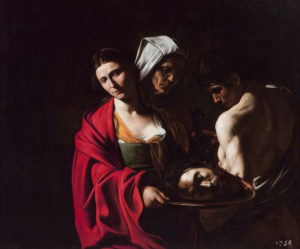
One of the royal collection highlights: Salome with the Head of Saint John the Baptist by Caravaggio
The Spanish Royal Collection is one of the greatest private art collections in the world. The Habsburg and Bourbon families amassed an incredible collection and served as patrons for several great European artists, including Diego Velázquez, Francisco de Goya, Titian, and Hieronymus Bosch. And now, close to a century after it was first suggested, the Royal Collection will be getting a museum of its own, open to the public.
The government started toying with the idea of a public museum to house the Spanish Royal Collection in the 1930s during the Second Republic. These plans got derailed, however, when Francisco Franco and his nationalist generals revolted against the Republic and started the Spanish Civil War. The Patrimonio Nacional, Spain’s national heritage agency that oversees Crown property, revived the idea in 1998, and the museum’s construction began in 2006. The project faced delays for various reasons, including budgetary issues and finding archaeological remains at the building site. Though construction was completed in 2016, finishing the interior was further complicated due to costs. But finally, after decades and €172 million, the Royal Collections Gallery opened on Wednesday, June 28th. Patrimonio Nacional’s president Ana de la Cueva described it as “the biggest museum project in Spain in decades, and also in Europe.”
The structure itself is certainly imposing, reminiscent of an enormous, colonnaded Greco-Roman palace. The design seems fitting, given it’s only a stone’s throw away from the actual Royal Palace. The new museum will feature the collection of the Habsburg kings (who ruled Spain between 1516 and 1700), while another section of galleries will contain selections from the collection of the Bourbon family (which took over after the Habsburgs and currently sits on the throne today). The building also has several floors of underground galleries, some of which will be entirely dedicated to temporary exhibitions, the royal carriages, and the collection’s many tapestries. The royal collection contains about 170,000 items, including paintings, sculptures, tapestries, jewelry, drawings, and other pieces. If it wanted, the museum could circulate its works on display and replace them with new ones every day for over eight months without any repeats. So it’s safe to say that the new museum administration will have no problem keeping the galleries populated with new works, many of them never publicly exhibited before. Furthermore, the Patrimonio Nacional oversees nineteen royal properties with plenty of wall space, so the government might not have to spend too much on storage.
The collection’s highlights include Velázquez’s White Horse, Salome with the Head of Saint John the Baptist by Caravaggio, and a first edition of Don Quixote by Miguel de Cervantes. There are also more recent additions to the collection, like Antonio López García’s group portrait Family of Juan Carlos I, featuring the titular former king and his son, the current king Felipe VI who will be present at the museum’s inauguration. Who knows? With the museum’s opening, let’s hope this makes the Prado slightly less crowded.
